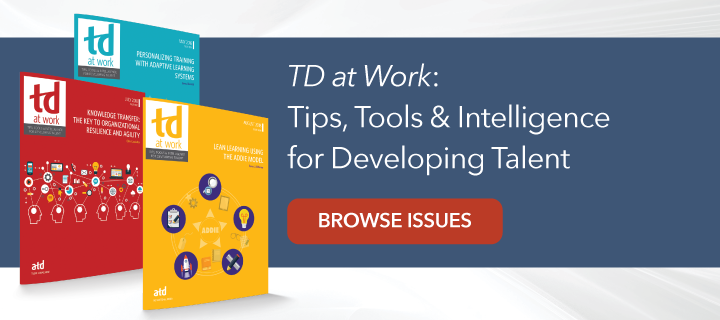Do you know what your organization would do if it lost the skills or knowledge essential to its success?
Your initial response to that question may be, “Really? Do you know how busy I am and how many requests I have sitting in front of me for compliance training, a new onboarding program, an employee engagement survey, and more? I hardly have time to think about ‘someday’ projects.”
But, how much will those programs matter if the company can’t communicate with its customers because the person who understands its custom-designed customer relationship management system has accepted a more lucrative job offer? Or if the company can’t carry out a key component of its mission because the senior leader overseeing the project had to take a leave of absence to care for an ailing family member?
Succession planning—identifying key positions, competencies, and skills that are needed for business continuity, as the University of Washington Human Resources describes it—can be complex and time intensive. Still, it’s necessary for all companies, both large and small.
In their TD at Work guide on the topic, Annette Cremo and Tom Bux offer guidance for successful succession planning for the way we work today.
How Succession Planning Is Different Today
In “ Succession Planning for Today’s Work World,” Cremo and Bux recommend that organizations concentrate on upskilling for general leadership competencies to allow for “flexibility when an employee assumes a vacant position.” We operate in a volatile, uncertain, complex, and ambiguous (VUCA) environment, and we don’t know exactly what future skills will be needed. What we do know for sure, however, is that leaders will need to be innovative, adaptable, and visionary; have a growth mindset; be able to build relationships; and have a strong sense of emotional intelligence.Further, the high number of retiring workers means that there are a lot of skilled workers walking out the door. Their knowledge needs to be captured while organizations still have the opportunity to do so. Employees, regardless of age, are going where they can be developed and where their employer shares their values. This means that companies may unexpectedly find themselves without key talent.
Strategies to Pursue
Talent development professionals and other leaders have a lot on their plates, but making succession planning a priority and part of an ongoing process must be top of list.While prioritizing, it’s essential to realize what is feasible based on your organizational resources and what else the organization has going on.
To identify critical skills, Cremo and Bux advise researching job components. One simple approach is to review job descriptions. “However, even if you’re diligent about keeping job descriptions up to date, remember that job duties often conform to each individual and you will likely need to make changes based on technology, personal strengths, or business insights.”
A second facet is to consider the attributes of exemplary performers and construct a job competency model. What special traits and skills do people holding those jobs exhibit? What makes them high performers?
Validate the job competency model. Do the competencies and job attributes still reflect where the organization is going and what it requires?
Based on the research to this point, where is the organization especially strong in its competencies? Where is it lacking?
Upskilling Where Needed
Now, consider potential candidates who can be developed in those areas. Remember that individual contributors who are strong technically won’t necessarily make great managers. And they may not be interested in managing. Further, managers may be happy where they are and, with responsibilities outside of work, may not want to ascend into more senior leadership roles.Once you have candidates, what kind of upskilling programs or initiatives will you implement? Consider mentor-mentee partnerships, leadership development programs, and stretch assignments.
While succession planning is a major undertaking, not taking action is not an option. As Cremo and Bux caution, “Organizations that do not address the labor and skills shortages will find themselves incapable of finishing projects, unable to ensure business continuity, scrambling for talent, and working to plug gaps.”




